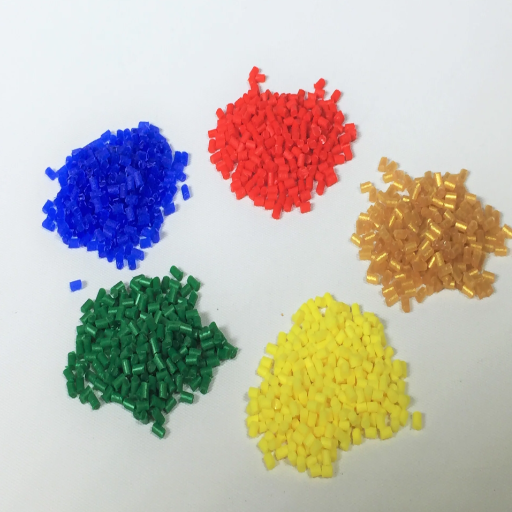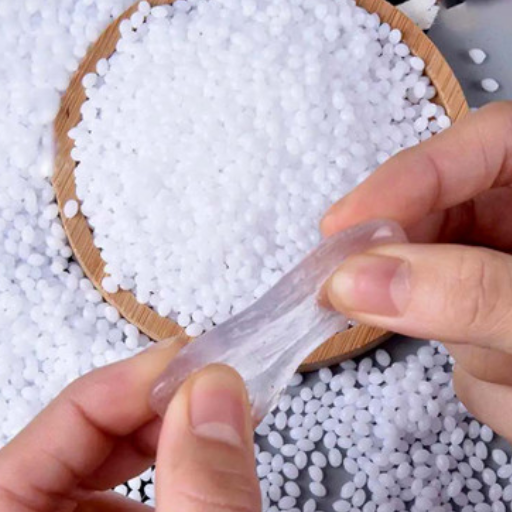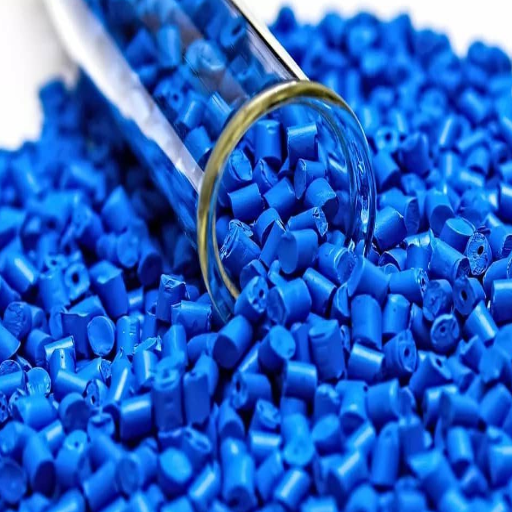Polyphenylene Oxide (PPO) is one of the most versatile and high-performance thermoplastic polymers in the industry. It is withstanding change exceptionally, maintains its dimensions accurately, and resists moisture and chemicals. As a result, PPO is used in demanding applications in automotive, medical devices, electronics, and other related fields. In this blog, we will shed light on what makes PPO a polymer of choice for engineers and examine its various applications and the innovations that are increasing its deployment. If you need to enhance the product’s performance in these extreme conditions or extend its life, understanding the capabilities of PPO is essential. Continue reading to learn how this advanced plastic has earned a reputation as a key component for high-performance solutions.
What is PPO, and its Key Properties?

Polyphenylene Oxide (PPO) is a high-performance thermoplastic known for its exceptional strength, thermal stability, and low moisture absorption. It is widely used in applications requiring durability and resistance to high temperatures. Key properties of PPO include:
- Thermal Stability: Retains mechanical properties at elevated temperatures, making it ideal for heat-intensive environments.
- Dimensional Stability: Exhibits minimal expansion or deformation, even under thermal or mechanical stress.
- Electrical Insulation: Offers excellent dielectric properties, which are critical for electronic and electrical applications.
- Low Moisture Absorption: Resists water uptake, preserving its structural integrity in moist conditions.
- Chemical Resistance: Resistant to many solvents, acids, and bases, ensuring long-term performance in challenging environments.
These properties make PPO a preferred material for producing automotive components, electronic housings, and industrial equipment.
What are the thermal properties of PPO plastic?
The exceptional thermo-mechanical stability of Polyphenylene Oxide (PPO) gives it an immense advantage for high-performance applications because it has a glass transition temperature in the range of 210–230 °C. PPO can withstand thermal stress while maintaining its structure. Furthermore, he has a relatively low coefficient of thermal expansion, which enables precision engineering applications and reliability in thermally demanding environments. Furthermore, PPO has a significant impact on performance at high temperatures due to its heat distortion resistance and its ability to retain mechanical properties at extreme temperatures. Therefore, PPO serves as an optimal material for designs that require dynamic and practical solutions for thermal engineering management.
How does PPO compare to PP homopolymer?
When evaluating Polyphenylene Oxide (PPO) and Polypropylene (PP) homopolymers, distinct variances in physical, thermal, and chemical properties separate the two materials. The main differences arise due to the imbalance in superior thermal stability and heat resistance, which in turn enhances PPO’s value for high-temperature applications compared to PP homopolymer. Alternatively, PP homopolymer is more cost-effective and has higher processability, which increases its use in lower temperatures and less challenging environments.
Also, PPO is recognized for having lower moisture absorption and excellent dimensional stability, which guarantees reliable performance even in high-humidity or moist conditions. In contrast, PP homopolymer, although offering sufficient mechanical strength and stiffness, has a higher tendency to deform under higher levels of thermal stress. Chemical resistance stands out as another area of differentiation; both materials have good resistance to chemicals, but in most cases, PPO outperforms in more aggressive, chemically hostile environments.
These differences illustrate the balance that needs to be struck when choosing between the two polymers, especially in terms of thermal, mechanical, and environmental requirements.
What are the mechanical properties of PPO resin?
PPO resin’s unique qualities are described by its extreme tensile strength, ranging from 6,000 to 12,000 psi, making the polymer safe for use under mechanical strain. Its use is further supported by its flexural strength and modulus, allowing for remarkable rigidity and stability alongside minimal deformation. Shock absorption is a critical aspect in most advanced impact-resistant devices, and PPO excels at this without fracturing or sustaining damage from sudden load shocks. In addition to this, the polymer can retain PPO’s mechanical characteristics, thermal, and areal stress. The material also features low-edged creep deformation under persistent stress, making it ideal for instance uses. These extreme qualities, combined with long-term gaps, make the material a prime choice for critical structural components.
What are the Applications of PPO plastic?
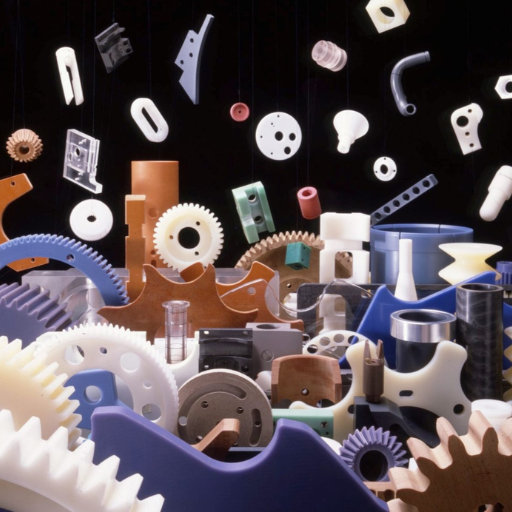
PPO plastic is widely used in industries requiring materials with high strength, heat resistance, and dimensional stability. Common applications include:
- Automotive Components: Used in parts like fuse boxes, connectors, and under-the-hood components due to their heat resistance and durability.
- Electrical and Electronics: Ideal for circuit boards, housings, and insulating parts thanks to its excellent electrical insulation properties.
- Industrial Equipment: Utilized in pumps, valves, and structural components for its mechanical strength and chemical resistance.
- Household Appliances: Found in hairdryers, irons, and other devices that demand thermal stability and resistance to cracking.
These applications highlight the versatility and suitability of PPO plastic for demanding environments.
Where is polyphenylene oxide used in the automotive industry?
The automotive industry is one of the largest consumers of polyphenylene oxide because it has unmatched impact resistance, thermal stability, and dimensional stability. PPO can be found in numerous vehicle components, ranging from electrical housings, fuse boxes, and headlight parts to radiator tanks. Its lightweight accelerates vehicle performance, which explosively impacts fuel consumption. Moreover, its powerful heat resistance, coupled with its electric insulating capabilities, makes polyphenylene oxide indispensable. Not only does polyphenylene oxide surpass other materials in mechanical strength, but its low moisture absorption and chemical resistance also make parts like engine covers and air intake manifolds almost immune to the harsh conditions they endure.
What are typical applications of PPO material?
This high-performance polymer is used for manufacturing a variety of PPO (polyphenylene oxide) parts, many of which are subjected to harsh environments due to its remarkable resistance to melting. Most parts fabricated from PPO include pump housings, battery casings, and powerful fuse boxes. In everything from the automotive sector to the electrical industry, lane changers and housing networks are PPO, and flames are where electrical might use as a degradation rest point.
The material has uses in biomedical engineering, including in sterilizable surgical instruments and diagnostic parts, due to its biocompatibility and resistance to repeated cleaning. Furthermore, PPO is used in water treatment systems, including filters and pipes, because of its low water absorption and resistance to stress cracking. This multifunctional polymer has been proven to be versatile, demonstrating performance in multiple advanced applications.
How does PPO perform in electrical applications?
Electrical uses of Polyphenylene Oxide (PPO) are significant due to its remarkable features, including high dielectric strength, a low dielectric constant, and strong insulation. Because of these factors, it is useful in electronics, such as connectors, housings, and circuit board substrates. With PPO’s thermal stability, it can safely operate under high temperatures. In addition, its moisture resistance further mitigates the risk of failure due to electric hazards caused by environmental factors. Its low dissipation factors add very little loss of energy within high-frequency applications. This strengthens its position as a primary material in electronic and electrical systems.
What are the Thermal and Mechanical Properties of PPO?
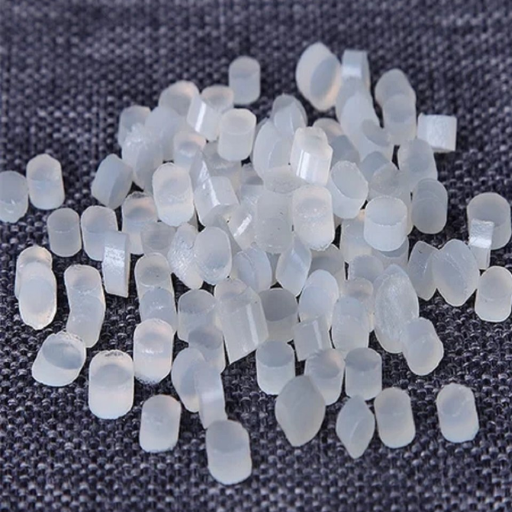
Due to its excellent thermal and mechanical properties, PPO is suited for challenging use cases. Thermally, it has a high glass transition temperature of about 210°C, which allows it to maintain its dimensional stability when heated. It has low thermal conductivity, making it an efficient thermal insulator.
PPO is also claimed to be highly impact resistant, stiff, and possess high tensile strength. It is resistant to mechanical deformation and keeps its utility over prolonged periods of use. Apart from that, PPO possesses a low thermal expansion coefficient, which allows it to retain its structural shape under temperature variations.
What is the melting point and glass transition temperature of PPO?
PPO (Polyphenylene chlorides) doesn’t have a definite melting point due to being an amorphous thermoplastic. Softer phases occur within a temperature range. PPO is said to have a glass transition temperature of roughly 210°C, which is considered high. The graph region of shape flexibility gives the material long thermal endurance and resistance to distortion under elevated temperatures. These factors, along with his resilience, make him a reliable PPO in industrial and engineering environments.
How does PPO plastic exhibit high heat resistance?
PPO plastic exhibits outstanding heat resistance due to its rigidity and thermal stability, which are attributed to the aromatic rings in its backbone that inhibit molecular chain movement. Moreover, PPO has a high glass transition temperature, around 210°C (410°F). This means that PPO will maintain its shape and strength at high temperatures. The low thermal conductivity of the polymer contributes to its ability to resist and insulate heat, making PPO suitable for use in high-temperature applications over the long term. Such properties, along with structural heat resistance, allow the polymer to be used in electric housings and automobile parts.
What is the impact strength of PPO resin?
PPO resin is notable for its superior impact strength, which can be attributed to its molecular structure, which contains considerable amounts of aromatic rings and ether linkages. Its impact strength is usually within the range of 2.0-3.5 ft-lb/in (10.7 – 18.8 kJ/m²) as cited in norms like the ASTM standards concerning Izod notched impact testing, Moreover, PPO resin’s capacity to sustain inflexible bearing impact without getting fracture indicates that it can be used in application of high technical demanding reliability structures. Moreover, PPO maintains its impact resistance over a broad range of temperature extremes, enhancing its capabilities in both heating and cooling conditions.
How does PPO compare with Other Plastics?
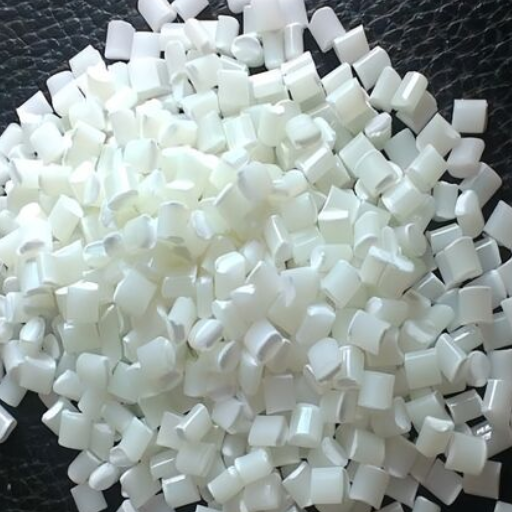
PPO is exceptional among other plastics because of its excellent impact resistance, mechanical strength, and thermal stability. Unlike polycarbonate (PC), which degrades over time at high temperatures, PPO retains its structure over a broader temperature range. Furthermore, PPO’s high resistance to chemicals, unlike materials like ABS, makes it suitable for use in cases where exposure to damaging substances is a concern. While it is considered more expensive than some general-purpose plastics, its durability and performance give it an advantage over other materials in engineering and industrial applications.
What are the differences between PPO and PP?
Polyphenylene oxide (PPO) is an example of a high-performance engineering thermoplastic, along with polypropylene (PP). Polyphenylene Oxide (PPO) is distinct among these two as it is known for exceptional mechanical strength, thermal stability, and excellent dimensional accuracy. With such properties, it is ideal for industrial use in making electrical housings, automotive components, and fluid handling systems.
PP, on the other hand, is a flexible and light-weight polymer that is cheap and easy to process. As such, it serves a wide variety of general purposes that require polymers. PP does possess moderate chemical resistance, alongside good fatigue resistance, although not to the same extent as thermal stability and rigidity that PPO possesses. Because of its flexibility and stiffness, Flexible Polypropylene is widely used in packaging, consumer goods, and textiles, but it is unable to perform under demanding conditions.
One of the significant differences that stands out is the material’s ability to resist thermal and mechanical stress. PPO can withstand much higher temperatures than PP while maintaining its structural integrity in critical engineering scenarios. Beyond that, PPO is superior in withstanding chemicals like strong acids or corrosive agents. While PP performs adequately in less aggressive environments, it degrades more rapidly than desired when exposed to prolonged chemical conditions. Because of this clash, Polyphenol Ether becomes a better material choice in cases requiring specialized applications, while Polypropylene stays practical for everyday use.
Why choose PPO over polystyrene?
Compared to Polystyrene, PPO is often regarded as a better choice for use in advanced applications due to its superior performance characteristics. Thermally, PPO has much better heat resistance, being more stable at higher temperatures, and it withstands deformation. In contrast, Polystyrene’s heat deflection capacity is much lower, making PPO more suitable for high-temperature environments. Furthermore, superior efficiency in precision engineering is provided by the consistency in performance of PPO over long periods. Polystyrene does not showcase these features and is instead lightweight, brittle, and lacks the impact resistance that PPO provides. For use in the automotive, medical, and electronics industries that require high reliability and durability, polystyrene is inadequate due to its inability to withstand chemicals like oils and solvents. In these applications, PPO excels, further enhancing impact resistance.
How does PPO stand against engineering plastics?
When compared to other engineering plastics such as polycarbonate (PC), acrylonitrile butadiene styrene (ABS), and polyethylene terephthalate (PET), polyphenylene oxide (PPO) has distinct advantages. One of polyphenylene oxide’s (PPO) advantages is that it has unique attributes, such as exceptional thermal stability, which allows it to withstand prolonged exposure to elevated temperatures. It also maintains mechanical integrity, which is essential for high-performance applications. Although polycarbonate has good heat resistance, its susceptibility to scratching and UV coating damage makes PPO a better option due to its effectiveness in mitigating these issues.
When compared to ABS copolymers, PPO exhibits greater rigidity and dimensional stability, especially at high temperatures. While ABS is known for its durability and ease of use, its lack of high-temperature resistance makes it less advantageous compared to exposed harsh PPO conditions.
In both moisture resistance and electrical insulation, PPO performs better than PET. PET works well in situations with intense mechanical stress and barrier properties; however, its performance tends to deteriorate in humid conditions. That is where PPO shines due to its low water absorption capabilities. For electrical and electronic devices, automotive systems, or even medical devices that require reliable performance under harsh conditions, these attributes make PPOs stand out. PPO withstands the advanced engineering challenges posed by specialized applications due to its blend of mechanical properties, strength, environmental durability, and versatility among engineering plastics.
What are the Processing Techniques for PPO plastic?
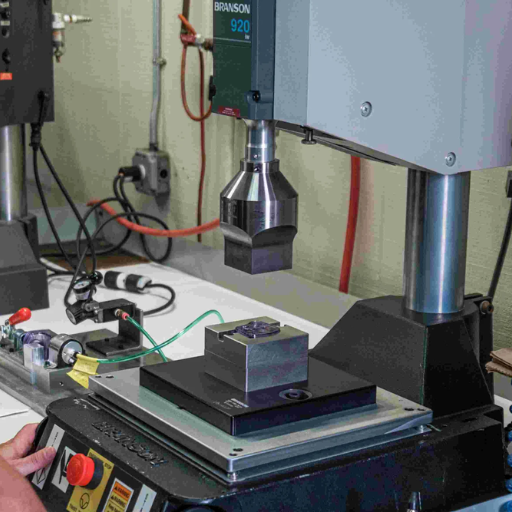
PPO plastic can be shaped using techniques such as injection molding, extrusion, and compression molding. Injection molding is the preferred technique for producing complex and high-precision shapes. Extrusion is used for producing continuous profiles, such as pipes and sheets. While less commonly used, compression molding is appropriate for larger and more durable components. With PPO having high processing temperatures relative to other plastics, careful attention must be given to temperature control during processing to preserve the material’s properties.
What is the role of injection molding in PPO resin processing?
PPO resin processing is greatly enhanced using injection molding because it offers sophisticated component detail and accuracy. This technique is best for mass production as it guarantees quality and consistency. It requires melting PPO resin pellets, which are then injected into a mold cavity in the form of molten resin under high pressure. The process is best suited for high-precision parts in the automotive, medical, or electronics industries, where accuracy and strength are paramount. Temperature, injection speed, and holding pressure are critical parameters that govern the production of injection-molded parts and must be controlled to avoid material defects. Moreover, glass fibers can be added while molding to improve the thermoplastic and mechanical qualities of the final PPO resin products.
How to achieve optimal surface finish with PPO material?
To achieve the best finish on parts made from PPO, careful control of process parameters, material treatment, and mold design is crucial. These include controlling mold temperature, which should remain between 80°C and 120°C for consistent cooling and reduction of surface cavities. Also, the injection speed should be set at moderate to fast, enabling the downstream filling of the cavities while preventing extensive weld line regions and other polishable flaws.
It is also important to note that the drying process is crucial. Maintaining a low moisture content is essential to avoid blemished surfaces, as moisture in PPO material tends to cause splaying and bubble formation. Results were best achieved by drying the material for 3 to 4 hours at 100°C to 110°C.
Apart from this, the design of the mold, its finishing, and the positioning of the vents also play a crucial role in determining the surface finish quality. Highly polished cavities in the mold enhance the gloss on the final result by reducing friction. Burn marks and voids, which worsen the overall appearance, can be avoided by uniform venting, which prevents air from being trapped.
Controlled smoothing and adding glass fibers are most effective when used in specific ratios. When included, the glass fibers serve best when distributed uniformly, as these fillers are responsible for determining surface roughness and smoothness. It is possible to achieve the required standards for functionality and aesthetics of the surface with minimal control over the parameters of porcelain polymer PPO.
What are the best practices for CNC machining PPO?
When CNC machining polyphenylene oxide (PPO), several methodologies must be followed to yield optimal results. Firstly, choosing the right tooling material is very important. It is best to use carbide or diamond-coated tools because they do not wear down significantly when used with abrasive PPO. External tool geometry should also be addressed to minimize heat creation during cutting, as PPO is known to be very sensitive to thermal deformation.
Secondly, all machining operations must be adjusted, especially the feed rate, spindle speed, and depth of cut. It is best to use slower cutting speeds with moderate feed rates, which helps lower overheating and material chipping, both of which can adversely affect the surface finish and dimensional accuracy. Tool wear is another factor that requires regular attention to provide consistency when performing machining operations.
Thirdly, work-holding methods must also be suitable to avoid displacement or vibration of the material during machining. Using vacuum fixtures or custom clamps secures the workpiece while preventing damage. It is worth noting that PPO has moderate stiffness.
Lastly, using air or mist cooling systems to lower temperatures goes a long way in improving the effectiveness of the coolant. These systems remove excess heat without saturating the material, which can impair its mechanical properties. All of the techniques mentioned above can help machine PPO with great precision and efficiency, ensuring that all critical engineering requirements are met.
What are the Future Trends in PPO plastic Usage?
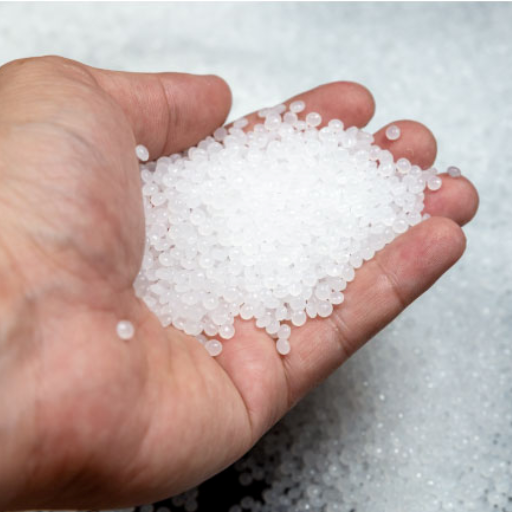
Developments in sustainable materials, automotive technologies, and electronics have led to a close relationship with the use of PPO plastic. All these branches of technology are increasingly focused on sustainability. Innovations are expected to include eco-friendly PPO designs and improve recyclability. The automotive industry is likely to increase its use of PPO plastics due to their lightweight and heat-resistant properties, which are vital for fuel-efficient and high-performance cars, including electric vehicles. Moreover, the insulating property of PPO makes it a highly demanded material for the electronics market, such as in 5G technologies and battery systems. All these seamless interrelations demonstrate PPO’s versatility in shifting industries.
How is ppo evolving in high-performance applications?
All industries can now access and fully utilize polyphenylene oxide (PPO) as it changes to meet ever-increasing technological standards. New polymer blending innovations have enabled enhanced thermal stability and mechanical strength of PPO, allowing for its use in harsh environments, such as aerospace and automotive engineering. Moreover, other developments in material processing also improve the moldability of PPO, creating new opportunities through advanced fabrication methods such as 3D printing. PPO is also being specially modified with additives to improve its flame retardant and chemical resistant properties, which are crucial for electronics and power systems. All of these advances showcase that PPO is now more adaptive to modern technological demands that require high performance, strict safety, and sustainability.
What innovations are being made in polymer technology related to polyphenylene oxide (PPO)?
Recent innovations in polymer technology have significantly increased the scope of Polyphenylene oxide (PPO) in advanced material engineering. One such advancement involves blending PPO with high-performance polymers, such as polystyrene and polyamide, further to improve processing, integration, and thermal stability. These blends have tremendous applications in automotive, aerospace, and military-grade electrical components due to their unmatched durability in harsh environments.
Moreover, researchers have been adapting the compatibility of PPO’s alloys with advanced manufacturing processes such as injection molding and additive manufacturing to enable easier further production. The incorporation of nanotechnology with PPO has also been investigated, resulting in improvements in barrier, thermal conductivity, and structural reinforcement. For example, the use of graphene or carbon nanotubes in the PPO matrices is being researched to enhance their performance characteristics.
In addition, expanding recycling technologies helps solve the sustainability issues associated with PPO by recovering and reusing raw materials, causing minimal property damage. These advances not only broaden the use of PPO but also address the growing concern about environmental responsibility in various industries.
What impact does sustainability have on PPO production?
The production of PPO aims for environmental regulatory compliance while promoting new processes for biofeedstock utilization, a step toward achieving carbon neutrality. Sustainability considerations influence the innovation PPO producers apply, using bio-based feedstocks instead of petrochemical precursors, which reduces the carbon output in PPO production. Additionally, advances in optimization processes are significantly decreasing the energy required during the polymerization and processing stages. Enanel further captures value, reduces waste, and lessens environmental damage. PPO recycling systems encourage closed-loop strategies for circular economy principles, focusing on design for disassembly. Sustainability strategies encourage changes in telling the story of how innovation drives processes and shifting to industrial emissions reduction initiatives. Eco-friendly approaches to polymers are welcomed.
Reference Sources
-
Structure and Properties of PPO/PP Blends Compatibilized by Triblock Copolymer SEBS and SEPS
- Key Findings: This study investigated the morphology and mechanical properties of blends of isotactic polypropylene (iPP) and polypropylene oxide (PPO). Without compatibilizers, large PPO particle sizes and delamination were observed. The addition of SEBS and SEPS triblock copolymers significantly improved the dispersion of PPO and interfacial adhesion, enhancing the blend’s fracture toughness.
- Methodology: The research involved blending iPP and PPO with and without compatibilizers and analyzing the resulting morphology and mechanical properties.
-
- Key Findings: The study evaluated the tensile and impact properties of PP composites with SEBS-g-MA and TWF. It found that increasing the filler volume fraction enhanced the tensile modulus and strength, but reduced elongation at break and impact strength. The crystallinity of PP increased with filler content.
- Methodology: Tensile and impact tests were conducted, and scanning electron microscopy (SEM) was used to study the composite’s morphology.
-
- Key Findings: This research investigated the adsorption behavior of PEO-PPO-PEO triblock copolymers on various surfaces. Surface roughness and hydrophobicity were found to significantly influence the nature of the adsorbed layer, which is relevant for applications in textile and fiber processing.
- Methodology: The study employed surface analysis techniques to examine the interaction of triblock copolymers with different substrates.
Frequently Asked Questions
Q: What is PPO plastic material, and what are its key characteristics?
A: PPO plastic material, or polyphenylene ether, is an engineering thermoplastic known for its high impact strength, dimensional stability, accuracy, and excellent electrical properties. It is often used in various applications due to its versatility and performance.
Q: How does PPO compare to other materials like polypropylene?
A: When comparing PPO vs polypropylene, PPO offers superior electrical properties and a higher melting point, making it more suitable for high-performance applications, particularly in electronics and automotive industries.
Q: What are the electrical properties of PPO plastic material?
A: The electrical properties of PPO plastic material include high dielectric strength and low dielectric loss, which make it an excellent choice for electrical insulation applications.
Q: Can PPO plastic material be annealed?
A: Yes, PPO plastic material can be annealed to relieve internal stresses and improve dimensional stability, which enhances its performance and longevity in various applications.
Q: What applications commonly use PPO plastic material?
A: PPO plastic material is used in various applications, including electrical components, automotive parts, and hot-stamped products, due to its high melting point and durability.
Q: Is PPO plastic material susceptible to thermal oxidation?
A: Yes, PPO is susceptible to thermal oxidation, which can affect its performance over time. Proper material selection and processing can mitigate these effects.
Q: How does the high impact strength of PPO benefit its applications?
A: The high impact strength of PPO plastic material allows it to withstand mechanical stress and impact, making it ideal for demanding applications where durability is critical.
Q: What is the significance of processing PPO plastic material correctly?
A: Correct plastic processing of PPO is essential to maintain its material properties with values, ensuring optimal performance and longevity in its applications.
Q: Can PPO plastic material be painted or metallized?
A: Yes, ppo plastic material can be painted or metallized, allowing for aesthetic customization and enhanced surface properties in various applications.

